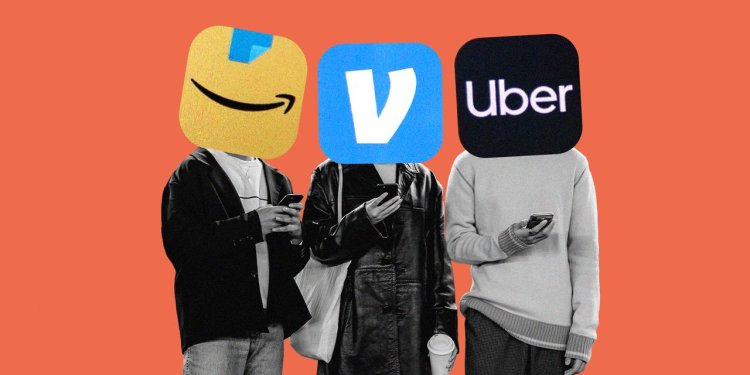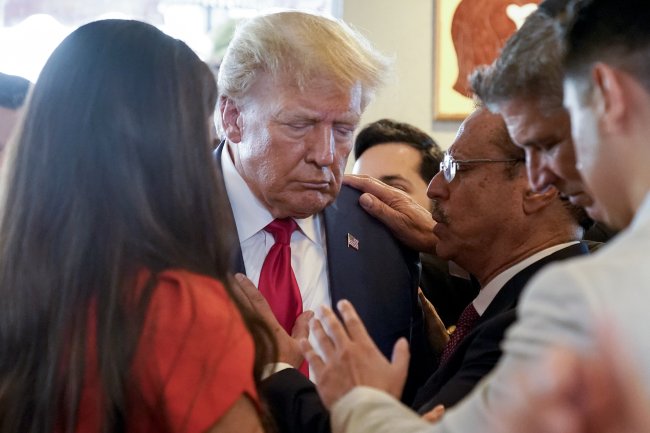The New Financial Rite of Passage for Teens—and Their Parents
By Oyin Adedoyin June 18, 2023 5:30 am ET Teenagers used to nag parents for the car keys or a little extra cash. These days, they are just as likely to want , Venmo and Amazon accounts. Access to a growing library of payment apps is now a rite of passage and easier than ever. In May, Uber and ’s Venmo launched accounts for children ages 13-17. Cash App, Fidelity, Amazon and others already offered similar services they pitch as a way to satisfy both adolescent desire for the apps and parents’ anxiety about how to manage their use. For parents, these teen services are a kind of financial learner’s permit that offer new ways to mo

Teenagers used to nag parents for the car keys or a little extra cash. These days, they are just as likely to want , Venmo and Amazon accounts.
Access to a growing library of payment apps is now a rite of passage and easier than ever. In May, Uber and ’s Venmo launched accounts for children ages 13-17. Cash App, Fidelity, Amazon and others already offered similar services they pitch as a way to satisfy both adolescent desire for the apps and parents’ anxiety about how to manage their use.
For parents, these teen services are a kind of financial learner’s permit that offer new ways to monitor their kids and instill better spending habits. Still, it is one more thing to worry about.
The teen apps are likely to continue proliferating as they are a proven way for tech companies to attract younger customers and retain them into adulthood, said Seth Pelletier, a product management director who has worked for fintech companies.
Relationships to banks and other financial institutions can be sticky, he said. “It’s like switching from an iPhone to an Android phone or vice versa.”
If any teenager right now who can’t drive wants to go to a friend’s house, their first thought is to call an Uber, Pelletier said. His 12-year-old son, Jacob, is already asking him when he can get a credit card and talking to his friends at school about investing in the stock market.

From left to right: Nicholas, Mikaila, Hayden and Drs. Laila and Alex Hishaw.
Photo: Kristen Leigh Conklin
Financial freedom—and risks
Hayden Hishaw’s mom got her a debit card when she was 7 from Greenlight, a fintech company that has offered a banking and investing app for kids and teens since 2017. Today, Hayden, 15, uses Cash App, Venmo, and Zelle to accept payment for babysitting jobs and to send and receive money from friends.
She says she appreciates the apps’ speed and simplicity.
Hayden recently tried Uber for teens for the first time to get home from the mall while her parents were working. She says she was nervous waiting for the car because she couldn’t choose the gender of her driver.
“When you’re completely alone and you’re a POC woman, it’s kind of scary,” she said. “So I was just panicking for like 30 minutes trying to figure out the whole system.”
In the end, she found it easy to use.
Uber teen was created after hearing from parents that they wanted the ability to track their teens’ rides and concerns from drivers that teenagers were calling rides for themselves, said Sachin Kansal, vice president of product management at Uber.
When a teen calls a car, the parent gets a notification, can track the route and see all the information about the driver.
Hayden’s twin brother, Nicholas, said the apps give him more freedom. He doesn’t have to ask his mom to drive him to Walgreens to get a Father’s Day gift because he can order it himself on Amazon.
“As you get these apps, it’s a lot more control,” he said.
There have also been some learning experiences and missteps, Hayden said—including a scam she fell for by sharing her account information. Fortunately, the lost $125 was recovered.
Fidelity said the teen accounts the company launched in 2021 proved more popular than the company expected. Half of the youth account holders have placed a trade and started investing for the first time, said Kelly Lannan, senior vice president of emerging customers at Fidelity.
Greenlight’s banking and investing app for kids and teens, has six million parents and teens signed up, said Tim Sheehan, the company’s chief executive. Through the app, parents can track their kids’ spending, investing and even loan money at interest.
Children have saved $400 million and invested over $30 million through the Greenlight app, Sheehan said.
The Venmo Teen Account lets parents or guardians create separate logins for their teenagers to send and receive money, along with a debit card. Until recently, some of these apps were unavailable to anyone under age 18 unless they used their parents’ accounts.
The investing, payment and banking apps give parents opportunities to teach financial literacy and responsibility and manage allowances—but also create more work, said Kira Lewis, a marketing instructor at Florida Gulf Coast University who also runs a site about parenting teens.
“It does become just one more thing as a parent that you’re having to manage and monitor with your kids and when you think about everything, even with technology and social media and their internet usage, it’s a lot,” Lewis said.

Jada Chambers, on left with her family, has more than $200 saved in the Greenlight app.
Photo: Patrice Rachel
Jada Chambers, 13, was excited when she got her Greenlight debit card because that meant she could stop asking her mother for money or permission to buy all the things she wanted. She said she has over $200 saved in the app.
Jada recently went to an amusement park where the vendors were cash only.
SHARE YOUR THOUGHTS
What decisions do you make around sharing access to payment apps with your teens? Join the conversation below.
“I was in shock,” she said. “I’m glad that my parents made me take some cash with me or else I wouldn’t have been able to buy anything.”
Teaching kids financial literacy around the time that they are making purchases by themselves, starting their first jobs or learning how to drive helps the information stick, said Yanely Espinal, director of educational outreach at Next Gen Personal Finance, a financial education resource for middle- and high-school teachers.
The few middle and high schools that teach financial literacy courses use antiquated examples no longer relevant to today’s adolescents, Espinal said. They discuss the importance of things like writing a check or balancing a checkbook, she said.
“I cannot tell you how cringe it is to hear adults still say that today,” she said.
Write to Oyin Adedoyin at [email protected]
What's Your Reaction?













